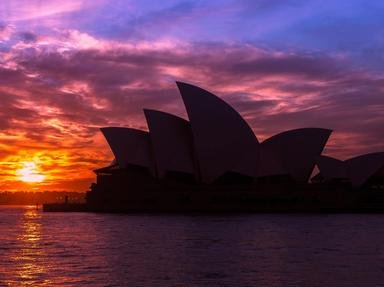Quiz Answer Key and Fun Facts
1. Valentine's Day, 1966, was an historic moment for Australia. The currency underwent a radical change, going from the pounds, shilling and pence of British influence to a decimal currency. The first four notes released had values of $1, $2, $10 and $20 and were printed on colourful paper, by contrast with the rather drab pre-decimal notes.
Which note was released a year later, after the public had got used to the new money?
2. The $1 note, now replaced by a coin, featured Queen Elizabeth II, who needs no introduction, on the obverse. On the reverse, a person is not depicted but rather contemporary Aboriginal art. What was unusual about this artwork?
3. The newly formed colony of New South Wales struggled to find a commodity it could use for trading with the Mother Country. Because of the long sea voyage, grains and meat were considered not suitable. However, wool would not spoil and in the 1800s in England there was high demand for high quality wool. Which man is credited with pioneering the wool industry in Australia? His portrait appears on the obverse of the $2 note.
4. Caroline Chisholm appeared on the first $5 notes. For work in which field did she earn this distinction?
5. Francis Greenway was a convict who was sentenced to death in England. His sentence was commuted (reduced) to 14 years' transportation to Australia. Because of his profession, he was appointed to a government position less than four years into his sentence. What talent, important for an emerging city, did Greenway have?
6. Henry Lawson appeared on the original $10 note. What is Henry's claim to fame in the history of Australia?
7. The obverse of the yellow and red $20 note featured Sir Charles Kingsford Smith. For which of the following achievements in the 1920s is 'Smithy' best known?
8. The original $50 note featured Howard Florey (later Lord Florey) on the front. What was the profession that was his claim to fame, and earned him a place on our currency?
9. Sir Ian Clunies-Ross was featured on the back of the original (paper) $50 notes. As which of these was he honoured?
10. It was in 1984 when the first Australian $100 banknote went into circulation. One side of this banknote paid homage to Antarctic explorer Sir Douglas Mawson who in 1911 led a team of men on a scientific expedition to Antarctica aboard a ship that was named what?
Source: Author
1nn1
This quiz was reviewed by FunTrivia editor
bloomsby before going online.
Any errors found in FunTrivia content are routinely corrected through our feedback system.
